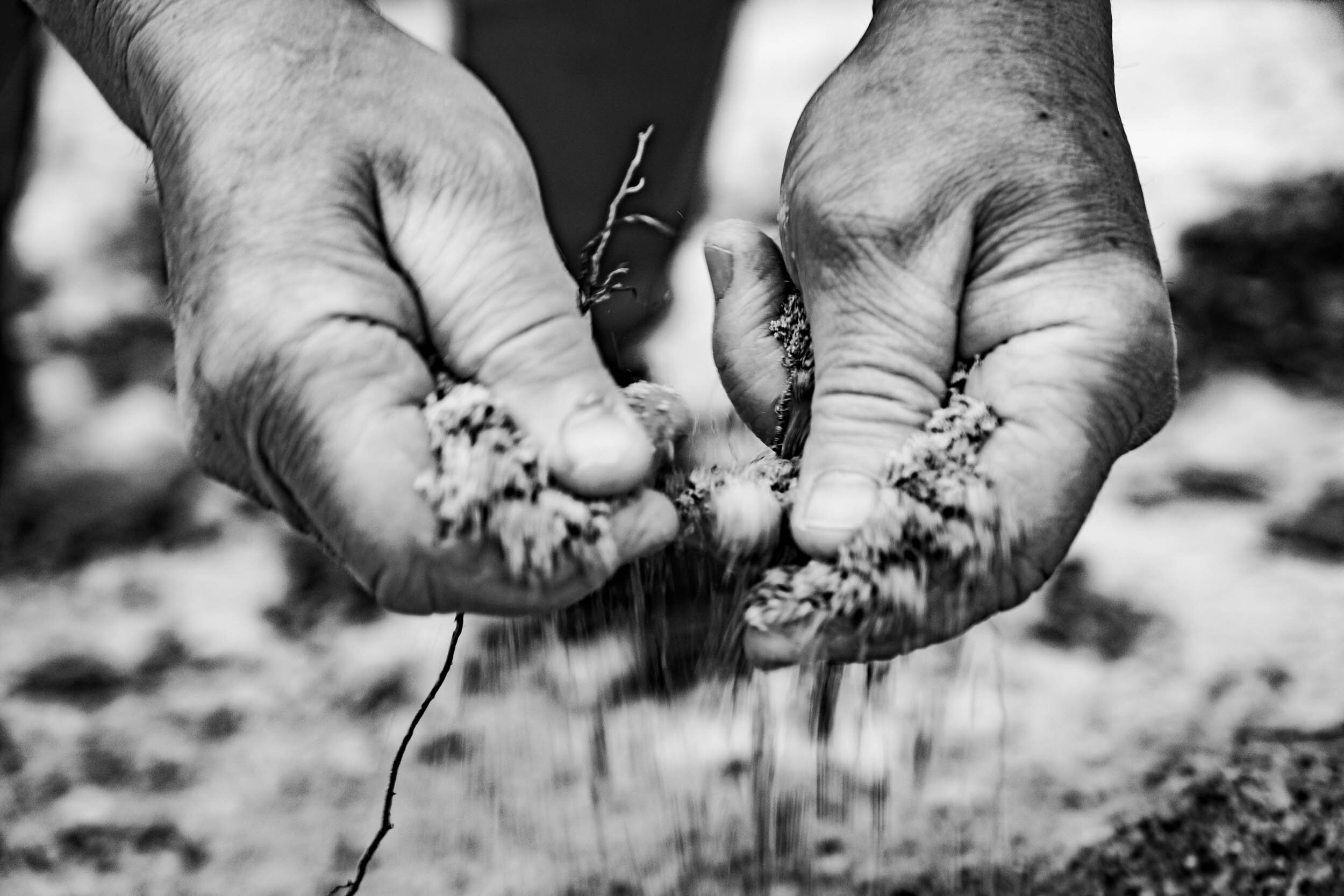Tasting Terroir
The Dry Farm Wines Family helps with an Italian Natural harvest
How to Notice and Taste Terroir in Wine
Why does Pinot Noir from Austria taste different from Pinot Noir from the famous Burgundy, even though it’s the same grape variety? The answer is a word you’ve probably heard in the wine world—terroir.
This common French wine-tasting term, pronounced “tehr-WAHr,” has no direct English translation, but the closest we can think of is “a sense of place.” That means the wine’s scent and flavor are reflective of where it was grown, and it explains why wine professionals are able to correctly identify the origins of wines in blind tastings.
This concept isn’t just limited to wine; many agricultural products have terroir—chocolate, coffee, rum, and tomatoes, to name a few. But one of the things that makes wine so special is that grapes have a distinctly powerful ability to express the characteristics of where they were grown.
Terroir encompasses the natural components of wine, rather than human influences like irrigation, oak aging, or fermentation techniques.
The key elements that affect terroir in wine include:
CLIMATE
Climate is one of the biggest indicators of overall wine style. This has to do with a grape’s ripeness. When grapes ripen on the vine, their acidity drops while their sugar levels go up. Then, when grapes ferment, that sugar turns into alcohol and the acidity provides structure and freshness in the wine (our pure Natural Wines often have strong acidity and wonderfully refreshing feel).
So a very ripe wine from a hot climate will have a full body and lower acidity, and a cool-climate wine will be lean, crisp, and dry.
Also fun fact: many of the best wines come from regions where there is a large difference between daytime and nighttime temperatures; this is called “diurnal shift.” When grapes experience warm, bright sun during the day and cool weather at night, they are able to ripen fully while retaining high acidity, leading to balanced wine.
SOIL
Some say that minerals in soil lead to mineral flavors in wine. While it’s certainly true that many wines grown in limestone or granite soils express mineral characteristics like wet stone, chalk, or oyster shell, soil scientists are trying to understand exactly why.
The factors in soil that are known to impact wine flavor include fertility, drainage, and heat/moisture retention.
Fertility: Surprisingly, grapes prefer soils with low fertility—vines like a challenge! Nutrient-rich soil makes the plants too productive, leading to less complexity in the wines.
Drainage and water retention: Loosely packed, porous soils like sand or gravel have good drainage, which is important in regions with high rainfall, while dense soils like clay are preferred in very dry areas because of their ability to retain water. High-drainage soils lead to more elegant, delicate wines, while soils that retain a lot of water produce bold, concentrated wines.
Heat retention: In colder climates like Germany’s Mosel Valley, heat-retaining soils like slate can store much-needed sunlight to encourage ripening. But in a hot region like Rioja in Spain, clay soils are ideal because they stay cool, letting wines keep their acidity.
TOPOGRAPHY
This refers to an area’s natural features like mountains, hills, valleys, and bodies of water, as well as elevation and slope.
Water: Rivers, lakes, and oceans are prized for their temperature-moderating abilities—many of the world’s most famous wine regions are close to water.
Elevation: Because temperatures drop at higher altitudes, mountains and hills are often the most desirable sites in a vineyard, and will produce more elegant and complex wines.
Slope: Sloped vineyards on hillsides or mountains are ideal in cooler regions when they are at the right angle to increase sunlight exposure.
So, how do we actually taste terroir in wine?
With a few simple tricks, you can learn to appreciate characteristics from a wine’s terroir. Next time you taste a pure Natural Wine, try to find these:
Acidity: The higher the acidity, the cooler the growing site. A high-acidity wine may come from a region with an overall cool climate, or it may come from a high-elevation site or a sloped section of vineyard that faces away from the sun.
Alcohol: A wine with high alcohol is very likely to come from a hot area, since heat encourages sugar development and sugar turns to alcohol during fermentation.
Body: Full-bodied wines typically come from hotter regions—alcohol and body go hand-in-hand.
Concentration: Highly concentrated wines often come from dense soils that hold plenty of water, while lighter, more elegant wines tend to result from free-draining soils. A great example of this is the difference between Barolo and Barbaresco—both made from Nebbiolo in neighboring regions of Piedmont, Italy. The wines have similar flavors, but the sandier soils of Barbaresco produce more delicate, aromatic wines, while Barolo’s clay soils lead to more powerful, structured wine.
Complexity: Very complex wines usually come from sites where the soil has good drainage and nutrient-poor soil, where the vines have to struggle to survive. Mountain wines are often prized for their complexity, as these locations are particularly challenging. Complexity is something you find in aromatics—how many flavors do you sense? If there is a lot going on, it’s probably complex.
Flavors: With practice, you may start to notice similarities in flavor among wines from the same area. For example, Sauvignon Blanc grown in New Zealand often has tart, pungent herbaceous and tropical fruit flavors, while the same grape in France’s Loire Valley shows leaner, subtler citrus and green apple notes.
Luen, Dry Farm Wines Family Wine Team





